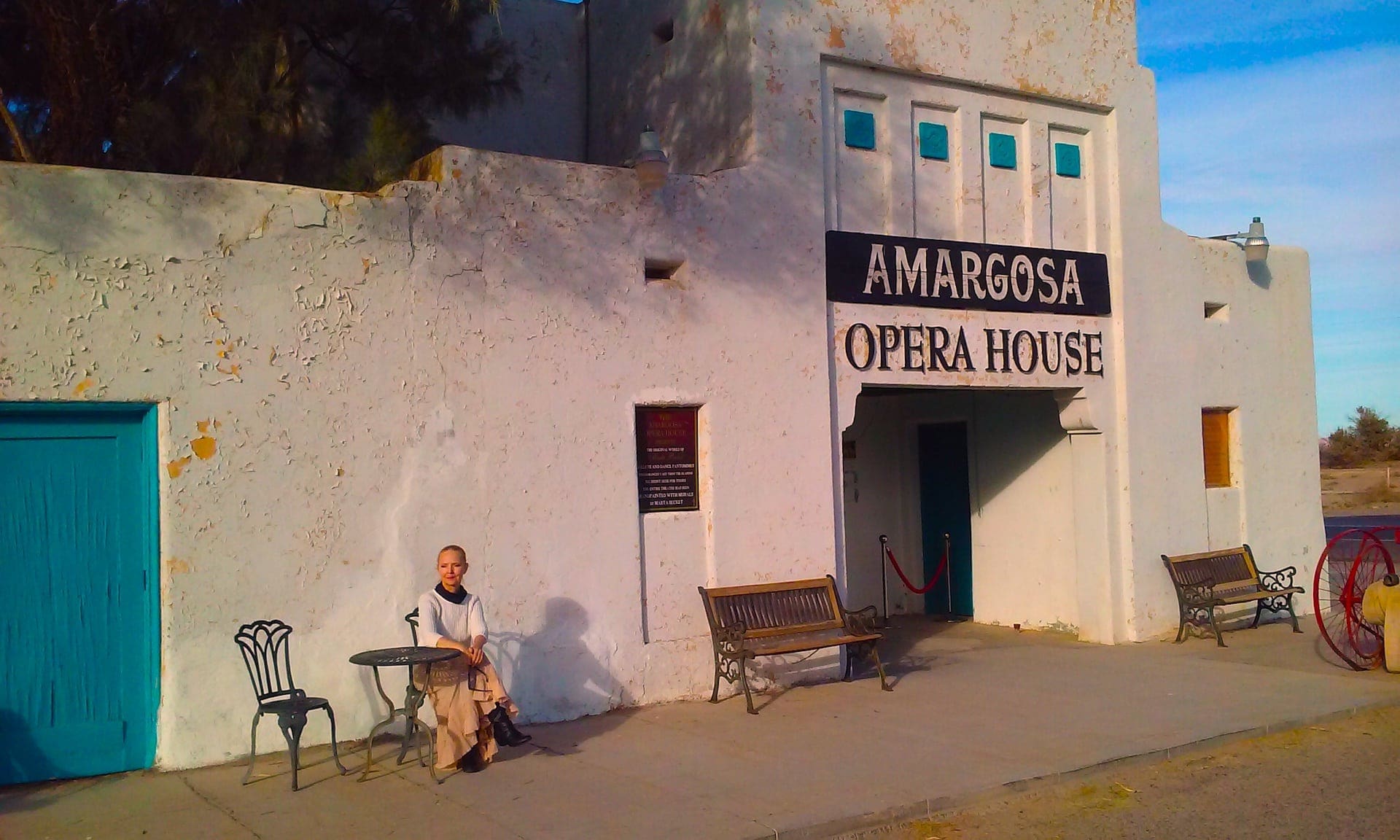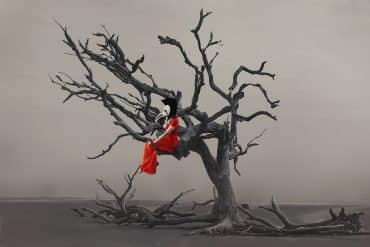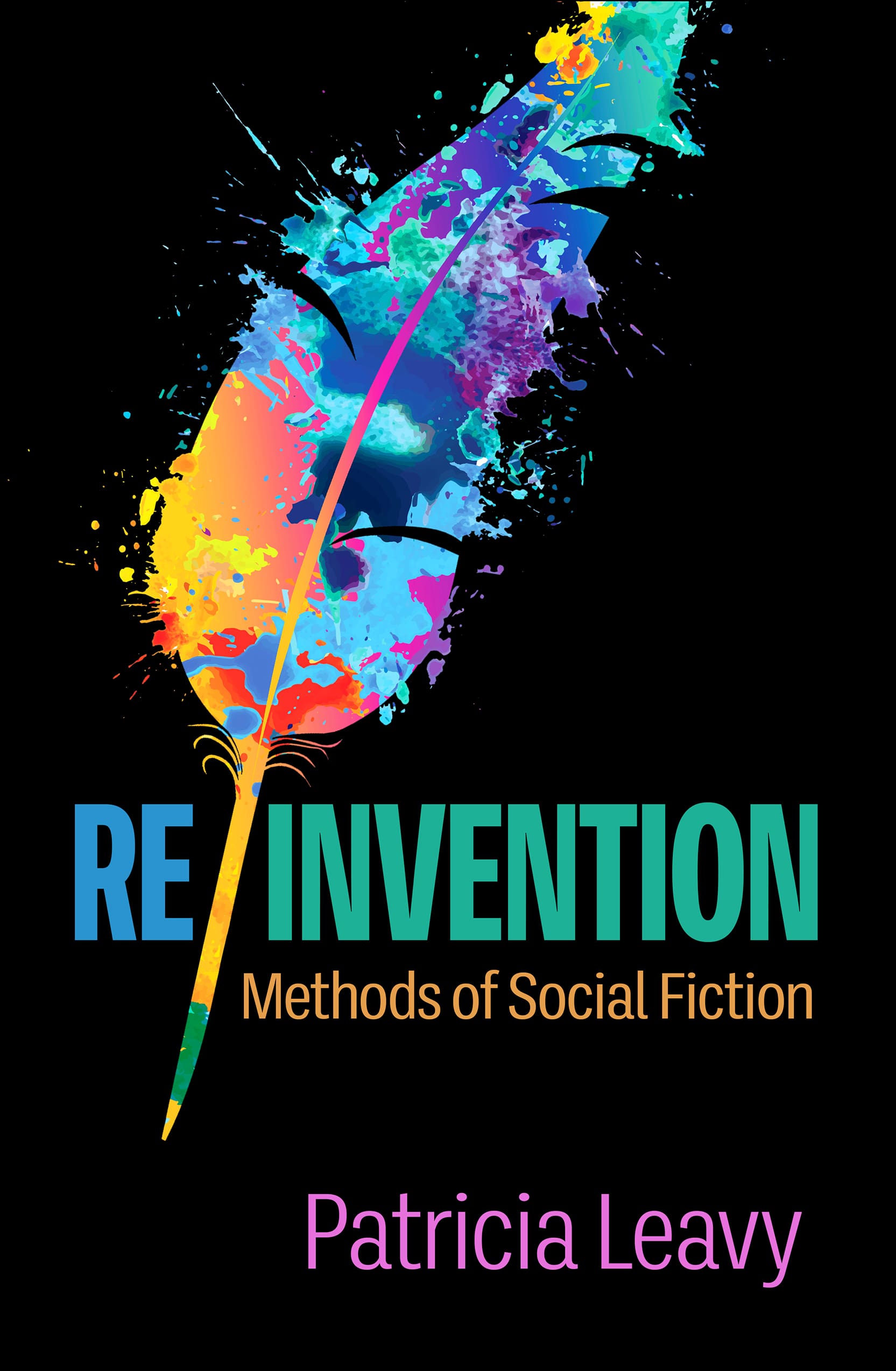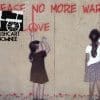Fiction as Research? We Can Do That?
Jessica Smartt Gullion
I’ve always wanted to be a writer. At least for as long as I can remember. As a child, most of the stories I wrote were about horses, fan fiction of The Black Stallion series. In high school, I read a lot of Stephen King, and my fiction took a turn to the dark, with tales about horrible things happening to girls my age. As an adult, I tinkered around with writing fiction, but it was a hobby, not something I took seriously. Until it became serious, and I wrote my first novel. Mostly I just wanted to see if I could do it.
Fiction and Public Health Disaster Research
At the time, I was an infectious disease epidemiologist. As part of my job, I often wrote “table top” exercises for emergency responders. These were disaster scenarios. We’d gather a variety of emergency responders in a room and they were invited to map out what they would do in response to the scenario. The scenario evolved with their actions. It was not unlike a Dungeons and Dragons game, with doctors and public health employees and school nurses instead of sorcerers, bards, and barbarians. I was pretty good at writing those scenarios and I enjoyed writing those scenarios. I decided to push one farther and write it as a novel.
I’ve always wanted to be a writer. At least for as long as I can remember.
My novel was grounded in research. Everything I knew about public health disaster response went into it. My data, as it were, included my experience as an epidemiologist, my training and experience working large-scale disasters, scientific literature, discussions with physicians and nurses and emergency managers, and my expertise as a PhD sociologist.
I switched jobs and joined the faculty at Texas Woman’s University. I put the novel in a drawer. My task was to teach qualitative research, which I’d never taught before. Long story short, one warm May afternoon, I found myself in a chilly conference room, listening to another sociologist, Dr. Patricia Leavy, talk about something she called Social Fiction.
Is Fiction as Research a Thing?
She’d recently written a novel, Low-Fat Love, based on her extensive research on women and their romantic relationships. She’d conducted a ton of interviews and distilled this theory that women are taught to expect and accept low fat (i.e., unfulfilling) relationships with men. But she also believed that full fat love was both possible and available.
She gave a lot of thought to who she wanted to hear her ideas. A handful of academics would read a journal article. That’s good, but she thought that didn’t get at the women who needed to hear her ideas. A nonfiction book might catch some attention, but again there’s a likelihood that the audience would be academic. While she did not want to lose the academic audience, she wanted to broaden it. She settled on fiction as a mode of representation and wrote her research as a women’s fiction novel.
I listened with excitement. Could we actually do this? Was this okay?
I raised my hand, nervous, but wanting to talk more about this with this woman. “I am also a sociologist, and a closet novel writer,” I said. The audience chuckled. “How did your colleagues respond to the idea of a novel as research? Were they supportive?” Because my initial thoughts were that this was fantastic, but that I couldn’t imagine some of my colleagues supporting social fiction in my bid for tenure.
But her colleagues were supportive. And Leavy’s success with social fiction would go supernova.
After the session, I introduced myself. She told me to stay in touch. I did. Not long after, she published the novel I’d written, October Birds, in her Social Fictions book series.
The Fairy Godmother of Social Fiction
Leavy is more than the mother of the social fiction movement in the social sciences; she’s its fairy godmother. Leavy not only works to promote and educate people about social fiction and other creative research methods, she actively helps writers publish their work. For a decade she served as the creator and editor for the Social Fictions series (first published by Sense Publishers and later Brill/Sense). The series published forty-five titles under Leavy’s tenure, before she decided to end the series to pursue other opportunities.
Leavy is a selfless mentor to countless social scientists and writers. She lives a feminist ethos of lifting others up, especially women and all those who have been marginalized. Many of the books in the Social Fictions series were written by women, nonbinary, and transgender authors. The titles cover a wide array of subjects and perspectives and feature characters diverse with respect to race, ethnicity, religion, gender identity, sexuality, social class, and health.
Leavy is a selfless mentor to countless social scientists and writers.
She’s also written a “how to” manual for others wanting to write social fiction, Re/Invention: Methods of Social Fiction. This accessible text guides the reader through the process of how to take academic research and re/present it in fictional form. She tells us the strengths of social fiction: it centers human experience in a relatable way, it supports empathetic understanding of other people’s lives, it teaches us about different perspectives on life, it’s a springboard for self-reflection and personal growth.

She’s also written a “how to” manual for others wanting to write social fiction, Re/Invention: Methods of Social Fiction.
To be sure, fiction has a long history of being used as a tool for social critique and change. Leavy contextualizes social fiction within that history. By exploring the work of Sartre, de Beauvoir, and Hurston (as a few examples of the many authors she covers), Leavy demonstrates how writers have used fiction to advocate for social change. She also considers the genres of historical and philosophical fiction.
One thing I had in mind when I wrote October Birds was that while I wanted to tell a good story, I also wanted to let people know what goes on behind the scenes in public health, to provide some education. I wanted people to understand how public health operates so that if/when there ever was a global pandemic, people would better understand the reasoning behind the requests public health made of them.
This accessible text guides the reader through the process of how to take academic research and re/present it in fictional form.
Of course I had no way of knowing that the COVID-19 pandemic was right around the corner. Many of the scenarios in the novel played out in real life. People who’d read the novel said I must be psychic. But that’s not the case at all. Because I drew on research and my own knowledge of how public health works in a disaster, I could extrapolate what would most likely happen. Because the novel is so grounded in research, the story rang true. If one wants to separate social fiction from other forms of fiction, Leavy notes that this is the crux of the difference, the intense grounding in academic knowledge.
An outcome of researching the world is that we learn about different slices of social life and how people operate within them. Part of the genius of Re/Invention is the way in which Leavy demonstrates how to take the leap from data and data collection to fictionalization. For example, a researcher who has identified themes in their data can use those themes as building blocks for storytelling. Fictional characters can stand in as proxies for different categories of people in the research project. Fictionalizing the story of the research can also serve to protect confidentiality.
She tells us the strengths of social fiction: it centers human experience in a relatable way, it supports empathetic understanding of other people’s lives, it teaches us about different perspectives on life, it’s a springboard for self-reflection and personal growth.
In the bulk of Re/Invention, Leavy deconstructs her own social fiction to teach us about the motivations, structures, and literary tools she uses to write a good story. In the process of this deconstruction, the reader is shown the bones of her works, and Leavy explains how those bones hang together. While she writes about literary tools, seeing them in action helps the reader understand how to write their own stories. This is a must-have text for anyone interested in creating social fiction. She even includes publishing advice.
The Arts as a Way of Knowing for Social Scientists
This is not Leavy’s first attempt at promoting the arts as a tool for social scientists. The first edition of her pivotal text, Method Meets Art: Arts-Based Research Practice, came out in 2008. It was the first textbook about arts-based research. It is now in its third edition, and has been translated all over the world. Like Re/Invention, in this text Leavy bridges the art/science divide and demonstrates the different ways of knowing that the arts can bring to our research.
In addition to narrative and fiction as method, she explores poetic inquiry, music as method, dance and movement in inquiry, theatre, drama, film, and the visual arts. For each technique, she includes a number of examples and explains how to use them (and there is a companion website with video and audio clips).
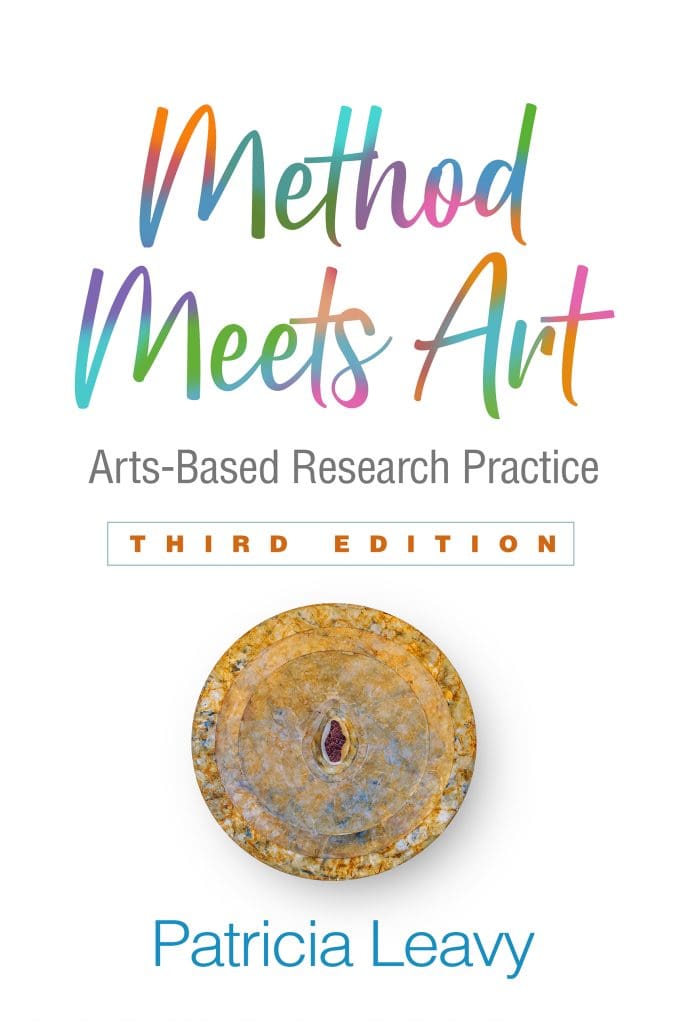
The first edition of her pivotal text, Method Meets Art: Arts-Based Research Practice, came out in 2008. It was the first textbook about arts-based research. It is now in its third edition, and has been translated all over the world. Like Re/Invention, in this text Leavy bridges the art/science divide and demonstrates the different ways of knowing that the arts can bring to our research.
When I was a newly minted sociologist, I had not considered the use of the arts in my research. I was trained to do positivism. This book opened a whole world of possibilities for me. While I could write a traditional journal article, this book showed me that I could also write a play, or perform a slam poem, or create a collage to highlight my findings.
As a research methodologist, Leavy has the unique ability to see multiple avenues for approaching and writing research. She recently came out with the second edition of Research Design: Quantitative, Qualitative, Mixed Methods, Arts-Based, and Community-Based Participatory Research Approaches. In this text, Leavy takes research questions and explores them using different ways of knowing and understanding. While social fiction is one way of knowing, she leads students through a variety of different types of inquiry and shows how rich our analysis and representation can be.
As a research methodologist, Leavy has the unique ability to see multiple avenues for approaching and writing research. She recently came out with the second edition of Research Design: Quantitative, Qualitative, Mixed Methods, Arts-Based, and Community-Based Participatory Research Approaches.
This is a significant text in the world of research methods textbooks because of the variety of approaches covered. It forces us out of the quantitative/qualitative binary in how we think about, do, and teach research methods (the book is so good that we adopted it in my department for use in our undergraduate social research methods course). The availability of multiple techniques gives the researcher a chance to ask what it is they want the research to do, what shapes the outcomes of the research might take.
A novel, a mural, a statistical report, a narrative, a series of poems–Leavy is cognizant of how to best showcase research. This is a strength that many do not possess. Oftentimes, researchers are dedicated to using one method they find comfort in, yet that method might not be the best way to answer their research questions.

In her novel, Hollyland, Leavy’s protagonist, Dee, has the unique ability to look at a piece of art (be it a film, a song, or other type of art), and figure out what would make it work better. Dee is able to tweak the art in a way that puts it over the top. While she’s modest about it, Leavy has the same skill when it comes to research. She can look at a body of work and tell the researcher what it needs to be truly excellent. I suspect this skill helped lead her to social fiction as a research method.
Because in her own research on women and relationships, she could see what was needed. A novel. She wasn’t afraid to write it, despite what others might think. Not only did her risk pay off, but she also paved the way for other researchers to write social fiction as well. Her books show us how to use creative approaches to answering our research questions, and for getting our findings to broad audiences.
References
Farley, W. (1941). The Black Stallion. New York, NY: Random House.
Gullion, J. (2014). October Birds: A Novel About Pandemic Influenza, Infection Control, and First Responders. Rotterdam, The Netherlands: Sense.
Leavy, P. (2008). Method Meets Art: Arts-Based Research Practice. New York, NY: Guilford Press.
Leavy, P. (2021). Low-Fat Love: 10th Anniversary Edition. Kennebunk, ME: Paper Stars Press.
Leavy, P. (2022). Re/Invention: Methods of Social Fiction. New York, NY: Guilford Press.
Leavy, P. (2023). Hollyland. Berkeley, CA: She Writes Press.
Leavy, P. (2023). Research Design: Quantitative, Qualitative, Mixed Methods, Ats-Based, and Community-Based Participatory Research Approaches, 2nd edition. New York, NY: Guilford Press.
Credits
Images are provided by Patricia Leavy
Learn More
New to autoethnography? Visit What Is Autoethnography? How Can I Learn More? to learn about autoethnographic writing and expressive arts. Interested in contributing? Then, view our editorial board’s What Do Editors Look for When Reviewing Evocative Autoethnographic Work?. Accordingly, check out our Submissions page. View Our Team in order to learn about our editorial board. Please see our Work with Us page to learn about volunteering at The AutoEthnographer. Visit Scholarships to learn about our annual student scholarship competition.
Jessica Smartt Gullion, PhD, is Associate Dean of Research for the College of Arts and Sciences at Texas Woman’s University. She is also Professor of Sociology and Affiliate Faculty of Multicultural Women’s and Gender Studies. She teaches a variety of courses on qualitative research methods. She has published more than 35 peer-reviewed journal articles and book chapters. Her writing has appeared in such journals as the International Review of Qualitative Research, the Journal of Applied Social Science, and Qualitative Inquiry. Her essays and Op-Eds have appeared in a variety of outlets, including Newsweek, The Conversation, Alternet, and Inside Higher Ed, and she is regularly quoted by national media. Her books include: Doing Ethnography (forthcoming); Qualitative Research in Health and Illness (forthcoming); Researching With: A Decolonizing Approach to Community-Based Action Research; Diffractive Ethnography: Social Science and the Ontological Turn; Writing Ethnography; Fracking the Neighborhood: Reluctant Activists and Natural Gas Drilling; October Birds: A Novel about Pandemic Influenza, Infection Control, and First Responders; Redefining Disability; In Sickness and in Health: Sociological Perspectives on Healthcare;and Voices in Sociology: An Introduction to the Core Concepts.



